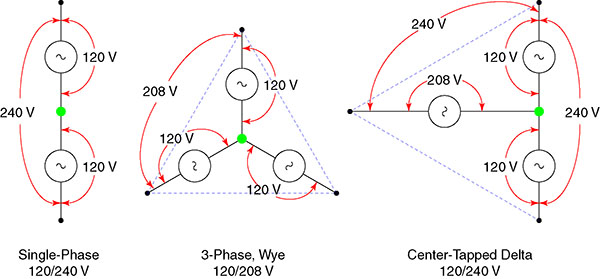quogueelectric said:The single phase xformer is not really 180 dg out of phase. We will freeze time to demonstrate what is happening by going to 2 batteries in series. One baterry is 1.5 volts from - to+ +being you 120 and negative being your grounded leg When you have 2 bateries in series and you are using the grounded midpoint as your reference in 1 direction you will read + 1.5 volts but in the other direction you will read -1.5 volts giving you a total of 3 volts across both batteries. When you are using a midpoint ground like on your 120/240 xformer it is just like the battery scenario where in order to keep the same reference ground you are actually reversing the measuring test leads giving you a seemingly negative voltage. it is not really 180 dg out of phase you are just measurig both directions from the middle of the winding seemingly out of phase.
I am not trying to break 200 posts again, but it is quite proper to define the voltages on L! and L2 relative to neutral as 180 degrees out of phase. If you leave the reference lead on neutral while measuring V1 and V2, you would see the 180 degrees. No difference in principle from measuring phase to neutral in a 3-phase system.
The crux of the matter is that you must SUBTRACT V1 and V2 to obtain the DIFFERENCE. Potential difference that is.
With due respect to everyone, electricians prefer to think of zero phase shift while engineers tend to accept the 180 degree argument.

